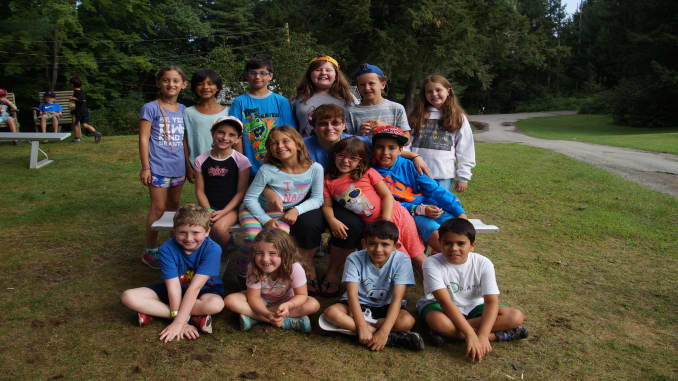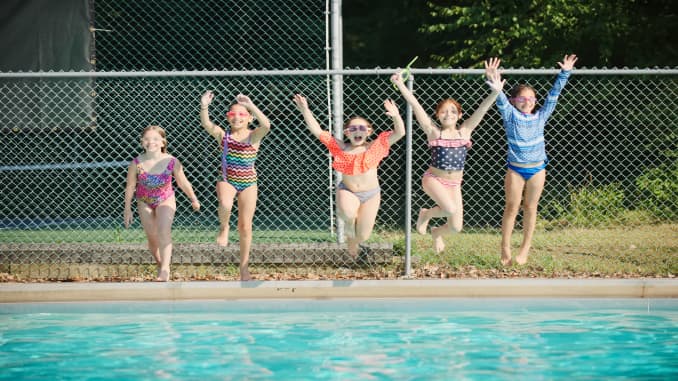‘Sleepaway camps have the potential to create a protective bubble,’
says former FDA Commissioner Scott Gottlieb
Twenty million children attend camps in the U.S. every summer, fueling the $18 billion camp industry. With summer just a little more than a month away, camp directors are still deciding if it’s safe for camps to operate amid the coronavirus pandemic. And parents are equally concerned.
On Thursday the Centers for Disease Control and Prevention said camps should not reopen unless they are able to implement coronavirus screening protocols, evaluating employees and children daily for symptoms and potential past exposures to Covid-19. But compliance with the CDC direction will depend on whether states adopt the decision tools into their own local policies — and whether the Trump administration supports and promotes the agency’s guidelines.
State and local guidance is expected to be provided as early as next week.
According to Former FDA Commissioner Scott Gottlieb, we are “still in the early innings” of the coronavirus crisis, but if it were up to him, he would choose to send his kids to a sleepaway camp over a day camp.
At CNBC’s Healthy Returns virtual conference on Tuesday, Gottlieb expressed that “sleepaway camps have the potential to create a protective bubble that is easier to do than at day camps.” That’s because at day camps the campers and staff are constantly coming and going, which could increase the risk of exposure to the infectious disease.
But Helene Drobenare, a social worker and the executive director of Camp Young Judaea Sprout Camps in New York, said it’s a misnomer that any camp can provide a bubble against Covid-19.
“A bubble is to assume that when you close the gate, that means you can’t get mail, you can’t get a milk delivery, you can’t send anybody in or out to get any kind of food or supplies, and it means you won’t have any day workers,” she said. “We probably could do a bubble for a very short time period, maybe a few days. I think a bubble is what we want to believe and it’s what our hearts want and that’s what we want for our children — a place that will be 100% safe and the disease won’t find them there. But in my opinion, I don’t think overnight camp can give that coverage. Nowhere in the world today could give that coverage. If it could, we wouldn’t be where we are.”
Camp Young Judaea has two day camps — one in Brooklyn and one in Croton-on-Hudson — as well as an overnight camp in the Hudson Valley. Collectively, about 750 campers attend the camps, which are considered to be in the coronavirus epicenter.

Jay Jacobs, executive director of Timber Lake Camps, told CNBC’s John Fortt on “Squawk Alley” last week that he is hopeful his camps will run as planned this summer, claiming that there are ways to ensure a protected environment, especially in sleepaway, or residential, camps.
TLC Camps is comprised of seven camps located in Long Island, the Catskill region of New York and northeastern Pennsylvania. His camps serve about 3,000 children.
“You can test your staff before they come to camp. You can test your campers before they come to camp and only accept those with negative tests, so you’ve already locked out Covid-19, at least initially,” he said. “Remember, many resident camps are in rural communities where the prevalence of the virus is not as great as down in the cities or suburbs.”
Quarantine’s effect on kids’ mental health
Some mental health experts believe that the harmful effect of kids in indefinite quarantine outweigh the risk of coronavirus exposure at camp.
“The need for connection is as fundamental a need as our need for food, oxygen and shelter, says humanistic psychologist Dr. Scott Barry Kaufman, author of “Transcend: The New Science of Self-Actualization.” “Of course, we must make sure that all children are protected from exposure to the coronavirus, but this protection shouldn’t come at the expense of opportunities for shared play, connection and friendship. The right balance of our needs is necessary to become a fully functioning human being.”

But Denise Daniels, a pediatric oncology nurse and child development expert, says that while she has empathy for the kids hoping to attend summer camp, she has trepidation about them sleeping in bunk beds, sharing showers, making crafts and having meals together on those long wooden tables in the food pavilion.
“I understand what a critical time this is for the mental health and well-being of families after being on lockdown, adhering to social distancing and upholding the endless health rituals of washing hands, coughing and sneezing in elbows, wearing masks and staying six feet apart,” she says. “Lots of kids will be attending virtual summer camps this year, and unbelievably, there are tons of fun activities kids can do outside on Zoom or Skype.”
Camp Young Judaea’s Drobenare agrees. “For the first time, they are creating relationships through a screen and not through touch or eye contact, but I believe that we have to deal the cards that are in front of us right now,” she said.
“If you are asking me to choose between a disease that I’m not sure if it will cause death, or to help these kids somehow build relationships and find hope through a screen, then I think we have to do that and be as creative as we can until we can get through this. It’s not the optimal situation, but I think life outweighs anything else in this type of risk.”
As soon as shelter-in-place orders went into effect in the New York area, Drobenare says she closed Camp Young Judaea and in under two weeks pivoted to create Sprout@Home, a menu of activities including book clubs, yoga classes and online bunk meetups with a counselor.
“We may not be able to be together physically today, but we could be together emotionally and spiritually still,” said Drobenare, who added that a final decision will be made by the end of the month as to whether or not they will run the camps this summer.
Coronavirus-related cases in youth
Headlines swirling the last several weeks about coronavirus-related cases rising among youth is also top of mind for parents and camp directors.
To date at least 110 cases have been reported in New York, and three young people — ages 5, 7 and 18 — have died. Doctors believe the illness — which the CDC now calls multisystem inflammatory syndrome in children, or MIS-C — has been reported in at least 19 states and Washington, D.C. It was previously referred to as pediatric multisystem inflammatory syndrome.
The condition appears to be a post-viral syndrome caused by a delayed immune system response to the coronavirus that can lead to blood vessel inflammation. The inflammatory disease is similar to Kawasaki disease, an illness most common in young children that causes high fever and swelling in blood vessels. Children may also develop a rash and experience abdominal pain and vomiting.
Most of the kids who have developed the condition are between 5 and 9 years old and have either tested positive for coronavirus or were found to have antibodies, suggesting that they’d previously been infected.
A hopeful decline in late summerng lockdown guidelines in late summer months. When the former FDA commissioner was asked by CNBC’s Tyler Mathisen at the virtual conference if he would let his children swim at a public swimming pool or swim club this summer, he did not commit to an answer but said, “Hopefully there’s going to be a seasonal effect here and we are going to see cases decline in July or August and we can all take a little breather in the summer.”
Nevertheless, he is still very concerned about the fall as the virus settles into a more “seasonal pattern.”
“If you want to be optimistic, last week we had an average of around 27,000 new cases a day and 1,700 deaths. That’s down from about 30,000 cases and 2,000 deaths. But it’s still too early to tell.”
To date the U.S. has nearly 1.46 million confirmed cases of Covid-19 and at least 87,603 deaths, according to data from Johns Hopkins University.Globally, the death toll has now surpassed 300,000.
Gottlieb, who is a CNBC contributor and sits on the boards of Pfizer and biotech company Illumina, was clear, though, that America still has a long way to go. “At some point, we will get to a level of exposure ... and transmission will start to slow down, but this is still the early innings in this epidemic,” he said.
Until there is a vaccine or the country reaches a level of so-called herd immunity, transmission could continue, said Gottlieb. Herd immunity is achieved when most of the world’s 7.6 billion people are vaccinated or develop the antibodies, giving the virus nowhere to go.
“We should just assume that most people are going to develop a level of immunity that’s going to last a period of time of around a year or perhaps less for some people,” said Gottlieb.
The ACA’s Rosenberg, who is a camp director himself, understands the importance of everyone — children, parents and camp directors — being aligned: “I know that the only way to engage and educate young people is if they feel emotionally and physically safe. If the parents don’t feel that way either, you’re in trouble.”








